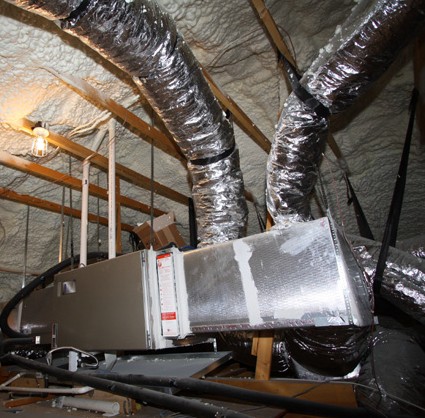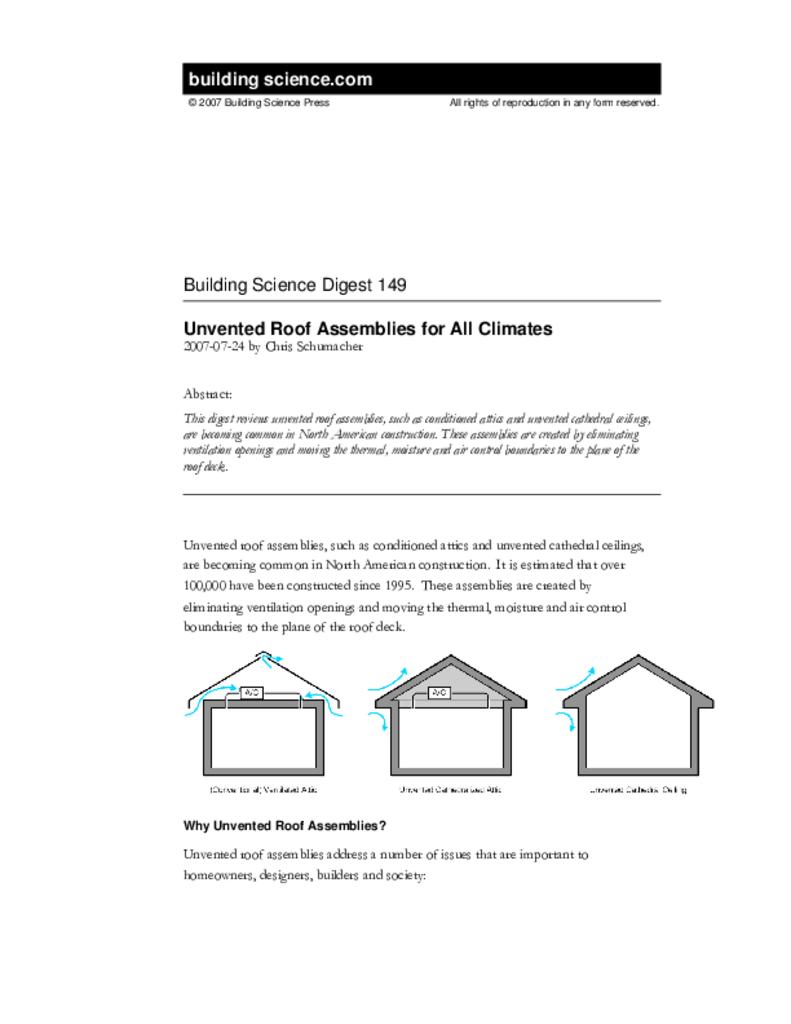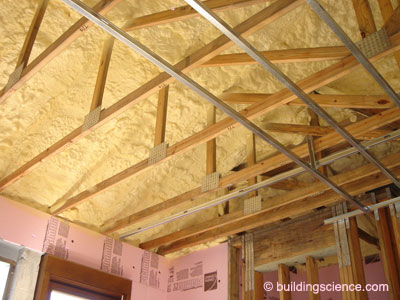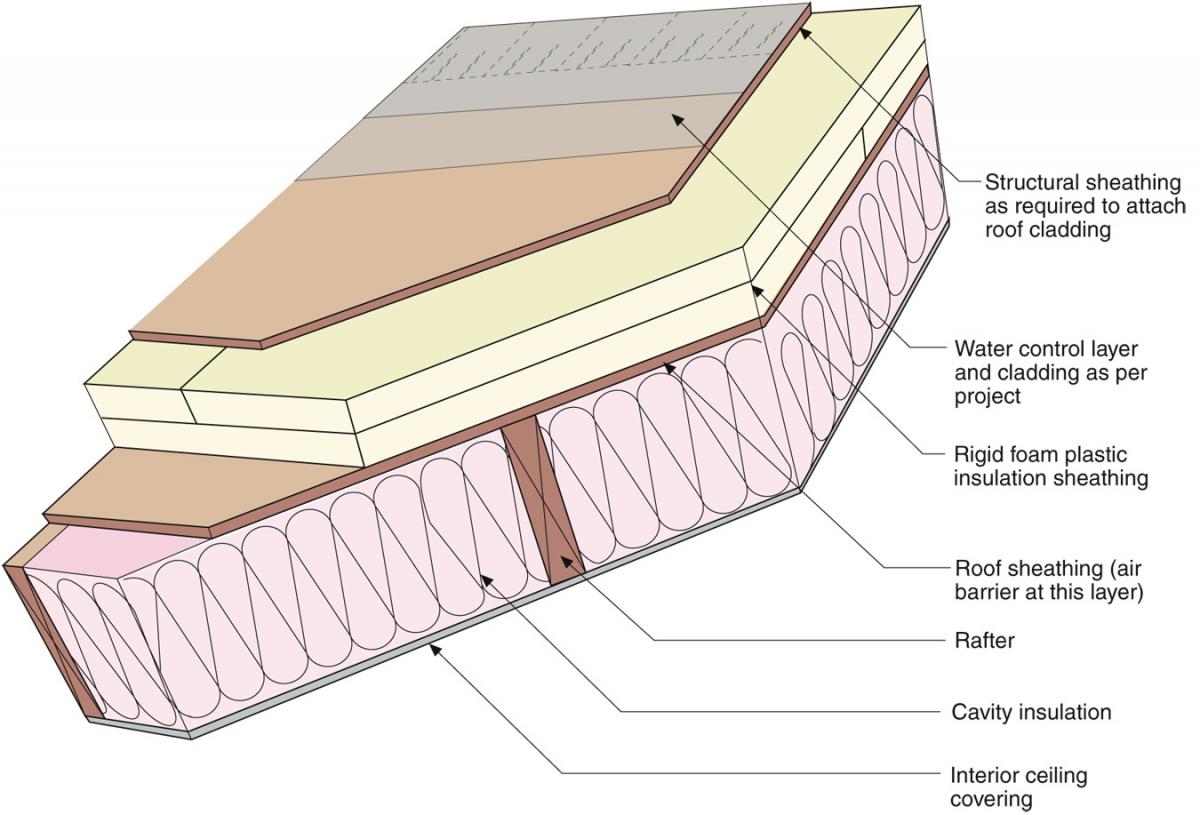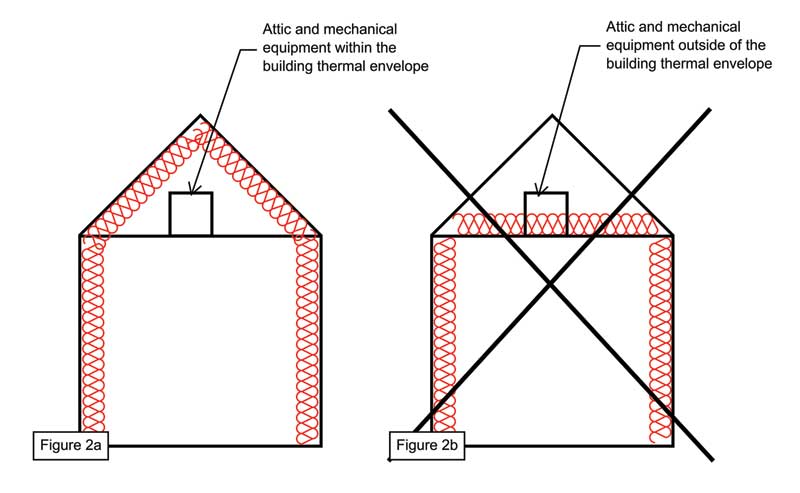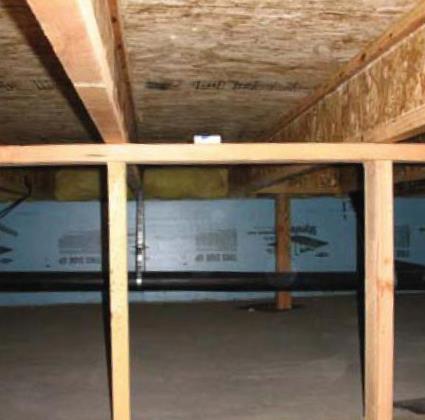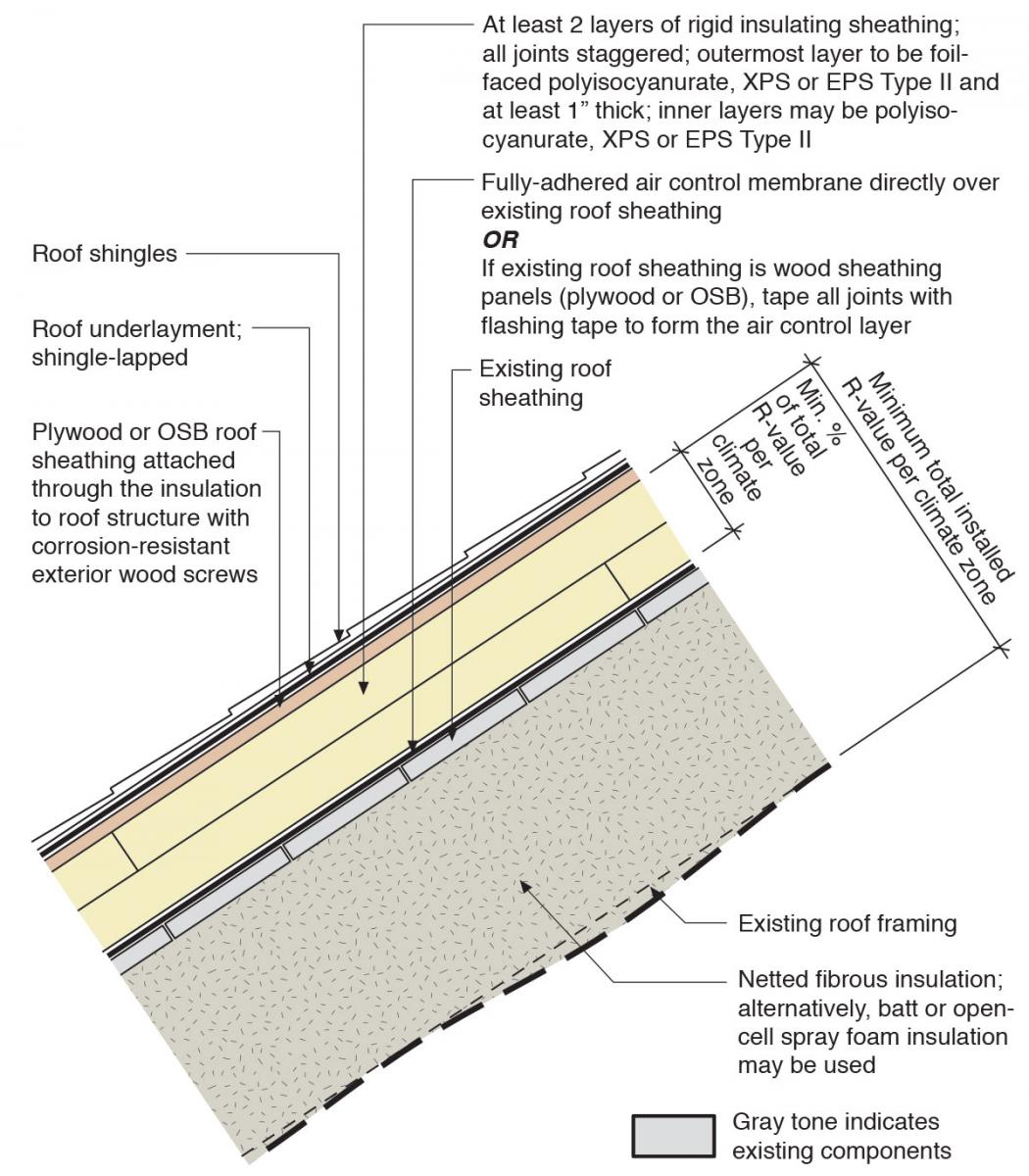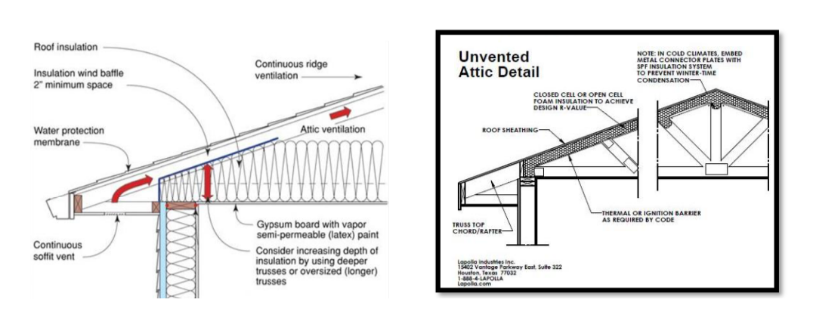The typical construction scenario involved the use of low density open cell spray foam insulation for the thermal barrier at roof deck and duct work installed in the unvented attic space.
High humidity unvented conditioned attics.
Identify the sources of moisture in unvented conditioned attics with elevated indoor humidity levels.
Decide whether open cell spray foam or closed cell spray foam is preferable when creating an unvented conditioned attic.
Recommend remedies to reduce the chance of sheathing rot in unvented attics with high moisture levels.
In the early 1990s construction of unvented attics became popular especially for structures in warmer climates.
If you convert your vented unconditioned attic to an unvented conditioned attic by installing open cell spray foam on the underside of your roof sheathing you may be surprised to discover.
A dehumidifier can remove it.
It wouldn t solve the problem of high humidity in the attic though.
The energy savings touted by unvented attics can be as high as 20.
Wood roofing panels endorsed by the apa usually contain an in service water content of between 4 and 16.
Most of these attics stayed dry.
Still got high humidity.
Put a dehumidifier up there plug it in set it between 50 and 60 rh and forget about it.
However if moisture is able to enter the unvented attic space it may lead to roofing panel issues.
High humidity in unvented conditioned attics.
Install a dehumidifier in your attic.
After from sealing things up and fixing your pressure balance this is usually the best solution to high humidity in a spray foamed attic.



